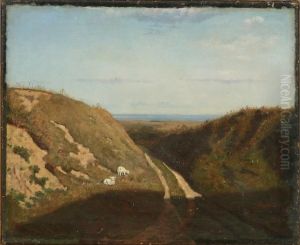Vilhelmine Maria Bang Paintings
Vilhelmine Maria Bang was a Danish artist born on April 9, 1869, in the small town of Assens in Denmark. She was known for her work as a painter, primarily focusing on floral still lifes, which were quite popular in the late 19th and early 20th centuries. Bang was part of a generation of women artists who sought professional training and public acknowledgment at a time when art institutions were beginning to open up to women, albeit slowly and with limitations.
Bang's education in the arts began at the Royal Danish Academy of Fine Arts' Women's School, which was one of the few avenues available to women who aspired to be artists during that period. She studied there from 1886 to 1892, honing her skills in drawing, painting, and understanding the academic principles of art. After her formal education, she continued to develop her artistic style, which was characterized by a delicate and precise depiction of her subjects, with a soft, yet vibrant use of color.
Throughout her career, Bang exhibited her work at various venues, including the Charlottenborg Spring Exhibition—an important annual event for Danish artists. Her participation in such exhibitions was critical for her professional development and public recognition. Although she never achieved the same level of fame as some of her male contemporaries, she was respected within the Danish art community.
The majority of Bang's oeuvre consists of still lifes, particularly floral arrangements, which were a popular genre among female artists of her time. These works allowed her to explore color, composition, and light. She often painted flowers from her own garden, bringing a sense of intimacy and personal investment to her canvases.
Vilhelmine Maria Bang's contribution to Danish art, particularly in the realm of still life painting, is appreciated by art historians, although she remains relatively unknown outside of Denmark. Her paintings reflect the quiet yet profound beauty of everyday objects and the natural world, and they continue to be admired for their technical skill and aesthetic charm. Bang passed away in 1944, leaving behind a legacy that contributes to the understanding of women's roles in the arts during her era.









